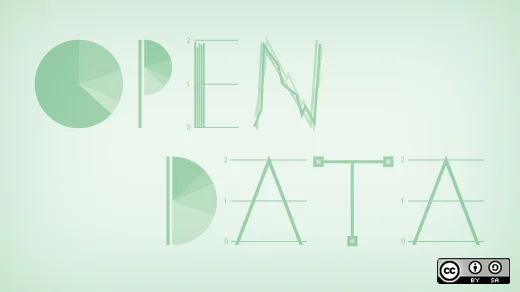The S.2852 OPEN Government Data Act aims to require true open data access at the federal level. In this article I will discuss the importance of open data in government, the current state of open data in government, and what we need to do to implement true open data.
When I read an article on the Center for Data Innovation site, Congress Is Stepping Up to Protect Open Data, I was struck by two feelings: elation and surprise. The article explains:
Sponsored by Representatives Derek Kilmer (D-WA) and Blake Farenthold (R-TX) in the House, and Senators Brian Schatz (D-HI) and Ben Sasse (R-NE) in the Senate, the bill would make changes to the U.S. Code to institutionalize open data best practices, such as publishing government data, by default using open and machine readable formats, and with an open license that imposes no restrictions on reuse. "Open by default" has been a mainstay of the open data movement for years, and for good reason: there is simply no way to reliably foresee the potential value of every government data set until the public has access to it.
The article links to a 2013 McKinsey report, Open data: Unlocking innovation and performance with liquid information, that says the national open data initiative of "open by default" represents real economic and transparency value for the public. The report points out that there is no assurance that open data will survive the end of the current administration.
What are the opportunities in legislation for open data within open government?
The how and why of open data was first discussed in the 8 Principles of Open Government Data, published in 2007, and it has increased its importance in government, civil society, and developers' communities. In 2009 President Obama, on his first day in office, issued his first executive order requiring agencies to identify and release "high value" data sets. This had an unintended consequence of some agencies participating and flooding data.gov with what were arguably "high value" data sets and some not participating. In 2013 M1313 Executive Order mandated that all data be open "by default." But did that really happen?
President Obama said of his Executive Order: Making Open and Machine Readable the New Default for Government Information:
"My Administration is committed to creating an unprecedented level of openness in Government. We will work together to ensure the public trust and establish a system of transparency, public participation, and collaboration. Openness will strengthen our democracy and promote efficiency and effectiveness in Government.
One of my open data colleagues, Dr. Dennis D. McDonald, has a concise description of the problem. He says that unless we address a few questions about open data, the effort will fail:
- How does making open data relate to or support the goals and objectives of the government programs that generate the data?
- How much will open data cost?
- Who will pay?
The executive orders, albeit well intentioned and ground-breaking, did not deliver on the promises made, and executive orders are easy to reverse. Legislation is a stronger approach.
Open data and transparency
There is noise on the local scene, and from civil society organizations, that transparency is not the goal of federal open data. In fact, some scholars have debated whether transparency is really a smoke screen enabled by "open data."
A few years ago, I read The New Ambiguity of Open Government, and I disagree with the authors' assertion that the edge of open government is going away. Yes, data sets that have nothing to do with accountability are being published. Yes, there are open data initiatives that stand up a few data sets and call it "open." This does not mean that all or most open data professionals do this. The idea of "government versus the people" is one reason Public Sector Agencies (PSAs) have trouble getting open data initiatives launched in the first place. This statement is based on my observations from ten years in public service. Most elected officials cite risk aversion as the main obstacle to releasing open data. I have managed 15 open data projects, including Open Raleigh and Open Durham, the main cause of resistance by data stakeholders is the fear of confrontation with civil society.
The main issue with data policy development and release of PSA data is the disconnect between PSAs and the private sector. There is little, if any, discussion on the value-add of releasing these data. This is not purely a government issue. The private sector, with a few shining exceptions (BuildingEye, a permit visualization application for example) has shied away from using or even trying to use these data. PSAs see this lack of engagement and fail to rise to the occasion. This causes many PSA open data efforts to stagnate.
Using a framework to which the US is already committed: the Open Government Partnership
The United States reached another important open government milestone in 2014 when President Obama signed legislation passed unanimously by the US Congress, requiring Federal agencies to publish their spending data according to clear standards that will help improve the quality of government information, help inform government decisions, and make government work more efficiently for the American people.
In 2011, the US and India became the original co-founders of the Open Government Partnership (OGP). The goals of the OGP are to establish an international body to oversee progress, and to be accountable to Civil Society Organizations (CSO). CSOs are organizations that advise governments how to fulfill their OGP obligations and commitments. Should Congress put Project Open Data into law, or should they use a hybrid approach by blending OGP commitments with the existing Project Open Data infrastructure? At the very least, our OGP commitments should be addressed by Project Open Data, and data sets supporting those OGP commitments should be the rubric of "high value".
The third National Action Plan (NAP) was published late 2015 by the White House Office of Science and Technology to the OGP. Its stated goals mention accessibility issues and codifying web standards. These action items will increase accessibility to government services. But do they increase access to information on what our government is doing?
OPEN Data legislation opportunities
The goals of the OPEN (Open, Public, Electronic, and Necessary) Government Data Act are raising awareness among governments and civil society of the usefulness and potential of open data in public policies, furthering awareness of the importance of open data, and supporting its use and fostering new data opening initiatives. Open Data Legislation should include strategic activities aimed at our OGP commitments:
- Defining the regulatory framework for the implementation of open data at the federal Level.
- Defining policy and technical guidelines for the implementation of open data that could have benefit for organizations at the state and local level.
- Redesigning and improving the functionality of public facing open data portals.
- Disseminating information on the topic of open data and encouraging third-party development of applications using open data.
Let’s go open some data with the right legislative approach. Join Jason Hare, Mark Headd, and Daniel Castro for a free webinar on this groundbreaking topic. You will learn:
- Who the OPEN Government Data Act will impact, and how
- Why you should support the bill as it moves through Congress
- What being transparent enough means, and how the US can finally carry the torch for transparency through open data
Additional citations
- Janssen, Katleen. "Open government data and the right to information: Opportunities and obstacles." The Journal of Community Informatics 8.2 (2012). https://ci-journal.net/index.php/ciej/article/view/952
- Davies, Tim G., and Zainab Ashraf Bawa. "The promises and perils of open government data (OGD)." The Journal of Community Informatics 8.2 (2012). https://ci-journal.net/index.php/ciej/article/view/929/926
- Peled, Alon. "When transparency and collaboration collide: The USA open data program." Journal of the American society for information science and technology 62.11 (2011): 2085-2094.
https://www.academia.edu/6284509/When_Transparency_and_Collaboration_Collide_The_USA_Open_Data_Program







Comments are closed.